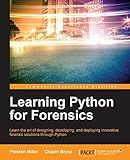Best JSON Parsing Tools for Groovy to Buy in December 2025
To parse a JSON array in Groovy, you can use the built-in JsonSlurper class. Simply create a new instance of JsonSlurper and use it to parse the JSON array. Once parsed, you can access the elements of the array like any other Groovy list. Remember to handle any potential exceptions that may arise during the parsing process.
How to extract specific elements from a JSON array in Groovy?
To extract specific elements from a JSON array in Groovy, you can use the JsonSlurper class. Here is an example code snippet to demonstrate how to extract specific elements from a JSON array:
import groovy.json.JsonSlurper
def json = '''{ "fruits": [ {"name": "apple", "color": "red"}, {"name": "banana", "color": "yellow"}, {"name": "orange", "color": "orange"} ] }'''
def slurper = new JsonSlurper() def parsedJson = slurper.parseText(json)
def fruits = parsedJson.fruits
// Extract specific elements from the JSON array def apple = fruits.find { it.name == 'apple' } def orange = fruits.find { it.name == 'orange' }
println "Apple: $apple" println "Orange: $orange"
In this example, we first parse the JSON string using JsonSlurper and access the fruits array. We then use the find method on the fruits array to extract specific elements based on a condition (in this case, the name of the fruit). Finally, we print out the extracted elements.
You can modify the condition inside the find method to extract specific elements based on different criteria.
How to handle nested JSON arrays in Groovy?
In Groovy, you can handle nested JSON arrays using the JsonSlurper class. Here's an example of how you can parse a JSON string with nested arrays:
import groovy.json.JsonSlurper
def json = '''{ "name": "John Doe", "age": 30, "addresses": [ { "street": "123 Main St", "city": "New York" }, { "street": "456 Elm St", "city": "Los Angeles" } ] }'''
def slurper = new JsonSlurper() def parsedJson = slurper.parseText(json)
// Accessing values from nested arrays println(parsedJson.name) println(parsedJson.age) parsedJson.addresses.each { address -> println(address.street) println(address.city) }
In this example, the JsonSlurper class is used to parse the JSON string into a Groovy object. You can then access the values of the nested arrays using dot notation or by iterating over them with the each method.
You can also modify the values in the nested arrays or create new JSON objects with nested arrays using the JsonBuilder class in Groovy.
How to handle duplicate elements in a JSON array in Groovy?
You can handle duplicate elements in a JSON array in Groovy by removing them using the unique() method. Here is an example of how you can do this:
import groovy.json.JsonSlurper
def jsonStr = """ { "numbers": [1, 2, 3, 4, 2, 5, 3] } """
def json = new JsonSlurper().parseText(jsonStr) def numbers = json.numbers.unique()
json.numbers = numbers
println new JsonBuilder(json).toPrettyString()
In this example, we first parse the JSON string using JsonSlurper, then we use the unique() method to remove duplicate elements from the numbers array. Finally, we use JsonBuilder to convert the modified JSON object back to a string and print it out.
After running this code, you will see that the duplicate elements have been removed from the numbers array in the JSON object.
How to convert a JSON array to a map in Groovy?
You can convert a JSON array to a map in Groovy by first parsing the JSON array into a list of maps, and then converting this list into a single map where the keys are the indexes of the elements in the list. Here's an example:
import groovy.json.JsonSlurper
def json = '[{"key1": "value1"}, {"key2": "value2"}, {"key3": "value3"}]' def jsonSlurper = new JsonSlurper() def jsonArray = jsonSlurper.parseText(json)
def map = [:] jsonArray.eachWithIndex { item, index -> map[index] = item }
println map
In this example, the JSON array '[{"key1": "value1"}, {"key2": "value2"}, {"key3": "value3"}]' is parsed into a list of maps using the JsonSlurper class. Then, we iterate over each element in the list using the eachWithIndex method, and add each element to the map with the index as the key.
After running this code, the map variable will contain the elements of the JSON array as key-value pairs, where the keys are the indexes of the elements.
How to parse a large JSON array efficiently in Groovy?
To parse a large JSON array efficiently in Groovy, you can use the following steps:
- Use a streaming JSON parser: Groovy provides the JsonSlurper class which can be used to parse JSON data efficiently. It reads the input JSON data as a stream, allowing you to process the data in chunks rather than loading the entire JSON into memory at once.
- Use the JsonSlurper class with the parseText() method: Instead of using the parse() method of the JsonSlurper class, which loads the entire JSON data into memory, you can use the parseText() method to parse the JSON data as a stream. This will help in handling large JSON arrays efficiently.
Example code:
def jsonText = // Your JSON data as a String def slurper = new JsonSlurper() def data = slurper.parseText(jsonText)
data.each { item -> // Process each item in the JSON array println item }
By using a streaming JSON parser like JsonSlurper and processing the JSON data in chunks, you can efficiently parse large JSON arrays in Groovy without running into memory issues.
How to iterate over a JSON array in Groovy?
To iterate over a JSON array in Groovy, you can use the JsonSlurper class to parse the JSON string into a data structure that you can then iterate over like a regular list. Here's an example:
import groovy.json.JsonSlurper
def json = """ [ {"name": "Alice", "age": 30}, {"name": "Bob", "age": 25}, {"name": "Charlie", "age": 35} ] """
def slurper = new JsonSlurper() def data = slurper.parseText(json)
data.each { person -> println "Name: ${person.name}, Age: ${person.age}" }
In this example, we have a JSON array with a list of objects representing people with their names and ages. We parse the JSON string using JsonSlurper, which returns a list of maps. We then iterate over each map in the list and print out the name and age of each person.



